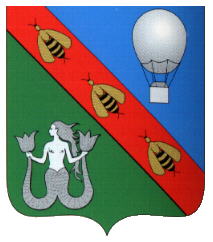Wimereux: Difference between revisions
Jump to navigation
Jump to search
Knorrepoes (talk | contribs) m (Text replace - "'''Origin/meaning :'''<br/>" to "====Origin/meaning====") |
Knorrepoes (talk | contribs) m (Text replace - "{|width="100%" style="color:black; background-color:#ffffcc;" |width="15%"|50 px|left |width="70%" align="center" |'''Heraldry of the World<br/>Civic heraldry of France - Armorial de France''' |width="15%"|[[Fil) |
||
| Line 3: | Line 3: | ||
|width="70%" align="center" |'''Heraldry of the World<br/>Civic heraldry of [[France]] - [[Armorial de France]]''' | |width="70%" align="center" |'''Heraldry of the World<br/>Civic heraldry of [[France]] - [[Armorial de France]]''' | ||
|width="15%"|[[File:France.jpg|50 px|right]] | |width="15%"|[[File:France.jpg|50 px|right]] | ||
|} | |}<seo title="Armorial de France, Armoires, Blason" /> | ||
'''WIMEREUX''' | '''WIMEREUX''' | ||
Revision as of 12:23, 6 November 2012
| Heraldry of the World Civic heraldry of France - Armorial de France |
WIMEREUX
Département : Pas-de-Calais
Origin/meaning
The arms were granted on May 11, 1927.
The port of Wimereux was founded by Napoleon on the 22nd of the Month of the Wind in the year XII (France used a different calendar at the time, it was early March 1805). This Napoleonic heritage is symbolised by the three bees, a typical symbol used by Napoleon.
The hot air balloon symbolises that on June 15, 1785 two people tried to cross the Channel by hot air balloon, starting from Wimereux (they failed).
T
he mermaid or siren, is a symbol for the strong ties with the sea.
Literature : Bréemersch et al, 1996.

